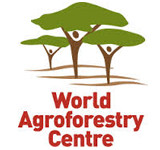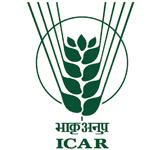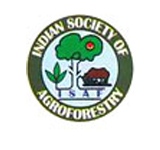
Vigyan Bhavan & Kempinski Ambience
10 - 14 February 2014
Delhi, India
blog

Once every five years we celebrate the role of tree-based systems in human prosperity with an international congress. The World Congress on Agroforestry 2014 in Delhi, India, opened the thematic sessions today with a programme on “The Business Case of Agroforestry”. Although the Congress is largely billed as a Science Event the rationale was to start with the demand side for knowledge, tools and technologies rather than the typical supply side – “this is what we know, is it helpful?”. In doing so it was essentially challenging researchers to filter out the difference between “what we need to know” and “what it would be nice to know”.
This “demand-pull” for knowledge comes from both the small-scale farmer and the large multinational, as well as the policy maker that straddles knowledge to action. Imagine the Chamber of Commerce from a middle income country arriving in a developing country which wants more Foreign Direct Investment asking the question “should we invest in tourism, the steel industry or agroforestry enterprises?”.
However, in agroforestry, forget for now the Chamber of Commerce since the biggest shareholder, the largest producer and the actual day-to-day business person making it happen is the small-scale farmer. The 500 million smallholders of the developing world are the real and the hidden private sector that need better recognition and nurturing. But how many smallholders have a business plan, have sufficient capital, keep a risk register, have access to credit, or maintain good records? We know that 90% of small businesses fail in their first year from start up. So will smallholder farmers be any different? What safety nets, what diversification strategies, what support platforms do they have?
Agroforestry systems, practices and the tree products emanating from them are well recognised as having high environmental and high social value but less well known for their financial remuneration. This misconception though was blown away for us today with the presentations and thoughts from the top-profile business panel comprising Howard Shapiro (MARS), Bernard Giraud (Livelihoods Venture & DANONE), Tristan Le Comte (PurProject), Shri Krishna Byre Gowda (Chief Minister Agriculture, Karnataka) and Ranjit Barthakur (Tata Consulting Services).
Howard Shapiro stunned the audience with a pictorial tour around the world of what works well and why in agroforestry systems of relevance to MARS Inc.. He put success down to urgency, uncommon collaborations, up-front investment and action.
Bernard Giraud described the highly successful Livelihoods Venture that has a good financial return coupled with a high social and environmental returns. In Bernard’s view efficient knowledge and technology discovery had to be combined with local ownership and cost-effective programmes, and not boutique research projects.
Tristan Le Compte was effusive for his belief in the profitability of various agroforestry enterprises, citing an average rate of return of 49% for a portfolio of agroforestry options. This was possible he indicated through the concepts of creating shared value.
The link between the social and knowledge dimensions was well captured by Ranjit Barthakur with the phrase “emotional technology”. He called for better metrics to assess success ensuring the lens of evaluation had to consider impacts on air, energy, soil, waste and water.
Amongst such a stellar panel from the private sector though it was left to the State policymaker, Shri Krishna Byre Gowda to really stun the audience. In all my life I had never heard a policymaker say “I want to be a facilitator and not a regulator” but that is how Minister Gowda made the participants gasp in amazement. Right down to grass roots level he wanted the private sector to not just be the end market but to be a driver of change with inputs, knowledge and services. Karnataka is definitely open for business.
From such a stimulating session, and the follow-up discussions, it is hard to draw out a definitive list of top ten things that need to happen – so please take the following as a work in progress:
- The business case for agroforestry will generally only thrive in places where there is a coalition of actors working together, sharing information, risk and profits.
- The production economics of AF need to be better estimated and articulated for both individual products as well as a basket of options.
- It is great to work with individual farmers but they need to be catalysts or nuclei to cluster groups, associations, interest groups or cooperatives around.
- We will ignore the gender question at our peril. Women farmers alone and as couples will provide much of the drive, innovation and sustainability of AF markets. It is not just gender balance we seek but gender synergy.
- Supply Chain risks to not only processors but also producers need better identification and management
- Value chain development for AF tree products needs more work as home consumption will not make farmers rich.
- Farmers can only plant and NGOs can only promote what is available, and quality tree planting material is often a bottleneck.
- Private sector actors need to stop competing in pre-competitive arenas and better align together as well as with sub-national and national policy-makers
- Greater dialogue is needed between policymakers and private sector (MNCs, aggregators, traders, producers) to create and exploit an enabling business environment.
- Need to establish efficient, effective and achievable Agroforestry Sustainability Goals and Standards – recognizing the cross-sectoral nature of the wider land management issues and flexibility required for local contextualization using a balance sheet approach for resource use efficiency, food security, raw material sourcing, land health, water, farmer institutions, equity, food waste, and nutrition.
It is hard to be a prophet in your own land but this session showed there is a profit in your own land – if you choose to use agroforestry!!
By Dr.Tony Simons (Director General of the World Agroforestry Centre)
Photo by Ram Singh/ICRAF






5 People have left comments on this post
Right vision & policy to facilitate, promote and protect the farmers from corporate exploitation will be big boost to the Agroforestry in turn to the mankind.
Dr. Simons
Indian small farmers are really tiny farmers by world definitions . They cannot afford to write business plans, and keep record . Even that is a cost for them. so jk paper helps them. We prepare and show them various templates to chose from. in long run it is actual results of their enhanced income and resultant trust that wins.
The small farmers need much information on access to knowledge, planting material for trees and market for tree crops.
And supported by COMPLETE DEREGULATION of harvest and movement of tree produce especially wood across all a
States of INDIA.
I note note that one of the states in INdia wants to plant Poplar in Govt. forests. This is not desirable as it will affect markets of Poplar wood which is grown in very large scale by farmers of India. Obviously this state would want to bring poplar under regulation. So we are heading for conflicts. just one example
dharmendra daukia
“Management of limited resources (Land)- is a big challenge- to facilitate land to provide food for every human being in this world “-
Approach of Agroforestry to be well integrated with clear Vision to Protect & Promote Small Scale farmers.
Incentives to the Small farmers will boost growing Forest trees in their field – Gross root level
Much more Economic value of the Forest trees to be address -More Research Findings needed (Genetics)-To bring more consumers under net of Forest By Products.
Incentives Per Tree (IPT) approach may promote industrialist to get involve actively in Agroforestry.
I would like to suggest an approach which I am considering to bring out in scale in a project in Madagascar: Along with the community incentives (IPT) of Green Belt Movement’s projects in Kenya, where farmers/households/community groups with smallscale gardens or communal land, receive a community “gift” for each seed/seedling; trees planted; numerous recounts and regular followups in the community of treeplanters/farmers, we could create a similar approach to industrialists who are actively involved in CSR/AF/Carbon forest projects. It’s my opinion that the most valuable longterm effect in a region where Slash&Burn farming is a huge problem (as it is in Madagascar), would be to have an agroforestry approach to the land which has been depleted in the S/B process of farming, to allow the smallholder to return to his land within a shorter fallow period. Upon their return, they will then have a wider variety of incomes, food products etc., and in return reduce the increased pressure on protected forests. Companies who help finance such projects should in return receive some tax-alleviation only if they actively reduce their production/operation related CO2 emissions simultaneously. Such partners could then receive a “gift” for every tree they help to finance by means of reduced CO2/pollution tax/fees. I would like to know if anyone has experience from this approach and would be grateful for information/advice in this direction.
The Small-scale Farmer “is” the Private Sector plus a public good and social capital
This is the International Year of Family Farming and the World Congress did not mention family farmers once. Family farmers are ‘private sector’ however foremost they are a ‘public good’ e.g. they feed the public and social capital e.g. establish food security safety nets. The commercialization of agroforestry should come from the excess after meeting the public good, social capital and other asset building function of agroforestry and family farmers.
The term ‘demand side’ is misunderstood [likely] or misused. To illustrate, the difference is definitely not between “what we need to know” and “what it would be nice to know”. but rather what is the demand/requests of farmers, what is it family farmers like/want/need to know, what tools and technologies are they requesting. In other words, all research should be farmer selected, farmer focused and farmer led not professional advancement nor profit orientated.
Best, Bob Bishop
Food for thought and thought for food!
If it is the private sector, then why is it dominated by huge publicly traded companies?
“Free Trade” is abbreviated form of “Free-for-All”[as in brawl] no-holds-barred Trade”?